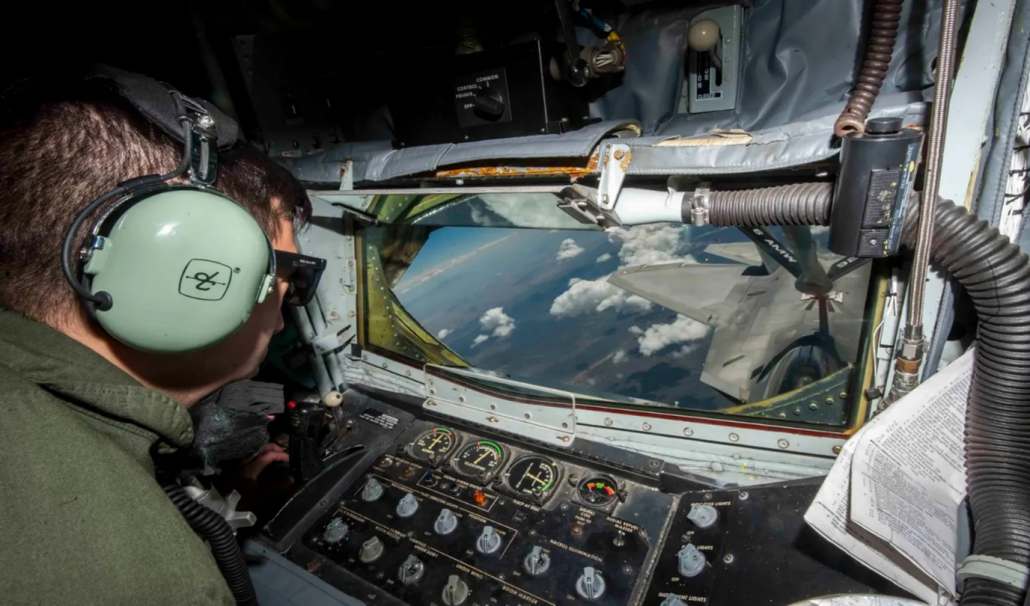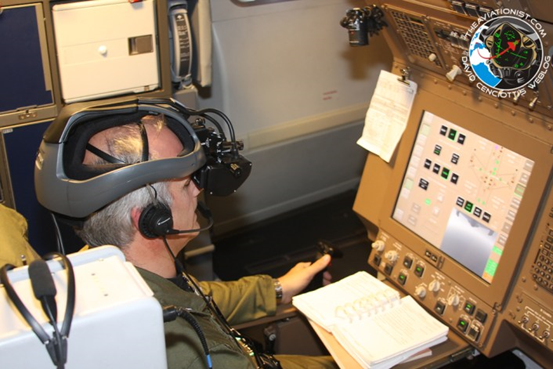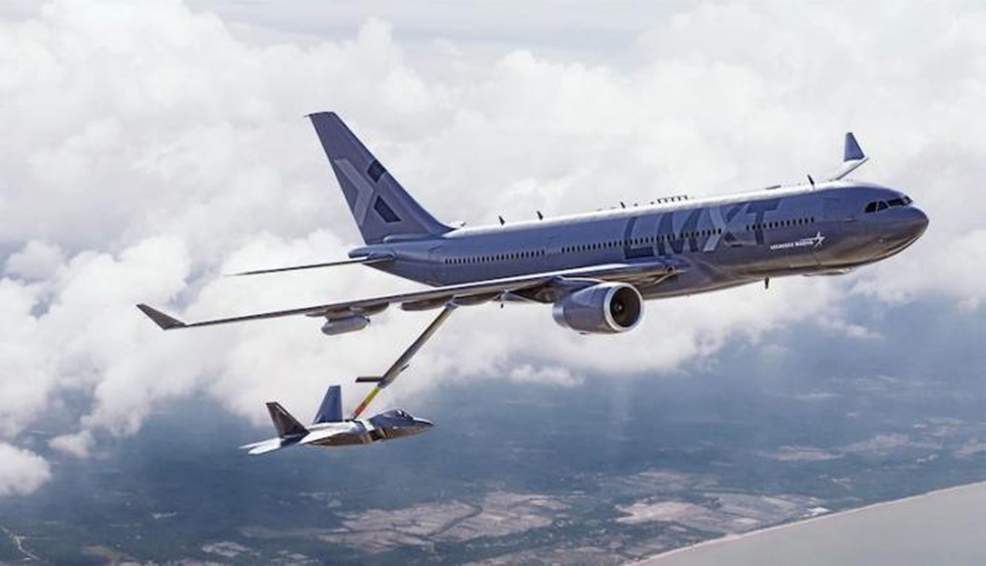TX028 空中給油タンカー A3Rオペレーション
Automatic Air-to-Air Refuelling (A3R) operationについての記事です。まずAirbusさんからご紹介します。
An Airbus MRTT Test Aircraft Has Carried Out The World’s First Ever Fully Automatic Refuelling Contacts
The A330 MRTT will be equipped the first automatic aerial refueling with a boom system.
An Airbus MRTT test aircraft has successfully completed the first ever fully Automatic Air-to-Air Refuelling (A3R) operation with a boom system, Airbus has just announced. The milestone was achieved during a flight test campaign, conducted earlier in the year over the Atlantic Ocean, using an Airbus 310 MRTT test aircraft equipped with the Airbus A3R solution and a Portuguese Air Force F-16 jet acting as a receiver.
“This milestone is part of the industrialisation phase of A3R systems ahead of its implementation in the A330 MRTT tanker development,” says the official news release on the company website.

The testing campaign was made of 45 flight test hours and 120 dry contacts with the A3R system; the certification phase will start in 2021.
The way the A3R system operates is particularly interesting, as it gives a clear idea about the level of automation achieved in the field of the aerial refueling:
“The A3R system requires no additional equipment on the receiver aircraft and is intended to reduce air refuelling operator (ARO) workload, improve safety and optimise the rate of air-to-air refuelling transfer in operational conditions, helping maximise aerial superiority. The goal for the A3R system is to develop technologies that will reach fully autonomous capabilities.
Once the system is activated by the ARO, the A3R flies the boom automatically and keeps the alignment between the boom tip and the receiver receptacle with an accuracy of a couple of centimeters; the proper alignment and the receiver stability is checked in real-time to keep a safe distance between the boom and the receiver and also to determine the optimum moment to extend the telescopic beam to achieve the connection with the receiver. At this point, the fuel transfer is initiated to fill up the receiver aircraft and once completed and the disconnection is commanded, the boom is cleared away from the receiver by retracting the telescopic beam and flying the boom away to keep a safe separation distance. During this process, the ARO simply monitors the operation.”
This represent a significant development in the aerial refueling operations that involve the use of a flying boom a rigid, telescoping tube, maneuvered by a “boom operator” by means of a control stick. As opposed to the “hose and drogue” system this AAR system has the advantage to eliminate the requirement for the receiver pilot to plug the IFR (In Flight Refueling) probe into the hose’s drogue: once the aircraft has reached the refueling position the operator moves the boom to insert the tube in the receptacle of the receiver aircraft. The flying boom is the standard AAR system used by the U.S. Air Force and required by aircraft that are equipped with a receptacle (as the F-16, F-15 or the F-35).

Senior Airman Eric Medina, 92nd Air Refueling Squadron boom operator, Fairchild Air Force Base, Wash., refuels an F-22 Raptor from Joint Base Langley-Eustis, Va., in a training sortie during Red Flag 16-3, July 21, 2016. During Red Flag, Medina is in charge of refueling aircraft that are participating in the exercise so they can continue the fight without having to return to Nellis AFB, Nev., for fuel. (U.S. Air Force photo by Senior Airman Jake Carter/Released)
Unlike the “hose and drogue” system with the flying boom, the effort of the AAR operation is mostly on the “boomer” (another nickname for the operator who moves the telescoping tube). In the previous generation tankers, as the U.S. KC-135 and KC-10, the boomer had to control the boom while lying prone inside a boom operator station located in the rear of the aircraft, watching the receiver through a rear observation window. More modern tankers, as the KC-767 and the problematic KC-46, use a remote boom operator’s station located behind the cockpit from where boomers move the boom using a joystick and watching the video from a series of cameras mounted on the tanker’s fuselage: the advanced camera system feeds a Remote Vision System (RVS) that provides high-definition stereoscopic imagery to the vision goggles attached to a sort-of flight helmet worn by the boomer during the air-to-air refueling.

That said, the A3R systems, like the one being developed by Airbus for the successful A330 MRTT, will probably be the reference for future refueling operation aboard manned tankers.
Note: a previous version of this article stated that the aircraft involved in the test was an A330 MRTT. Actually, Airbus news release didn’t specify the aircraft type (it refers to a generic MRTT test aircraft) but a reader spotted in a video that the test article involved in the test was an A310MRTT.
そしてこちらの(下記)はLMさんのLMXT3ARタンカーについてです。
9月21日、2021年発表記事:
Lockheed Martin has announced that the LMXT is being built in response to the US Air Force’s KC-Y Program. The new tanker builds on the design of the Airbus A330 Multi Role Tanker Transport (MRTT). Lockheed Martin is the prime contractor and works directly to implement US Air Force-specific requirements within the LMXT. The plane will be equipped with a fully automatic boom and air-to-air refueling system
Introducing The LMXT: America’s Next Strategic Tanker
Lockheed Martin Offers the LMXT for the U.S. Air Force’s KC-Y Program
LMXT: America’s Next Strategic Tanker, Sept.17, 2021

MARIETTA, Ga., Sept. 17, 2021 /PRNewswire/ — Lockheed Martin [NYSE: LMT] introduces the LMXT as America’s next strategic tanker ― built in America by Americans for Americans. Offered in response to the U.S. Air Force’s KC-Y Program, the LMXT represents the newest chapter in Lockheed Martin’s 60+ year history of producing and delivering tanker and cargo aircraft for the U.S. Air Force, U.S. Marine Corps, U.S. Navy and multiple operators around the world.
The LMXT complements the U.S. Air Force’s tanker capabilities by providing the most advanced aerial refueler to meet America’s immediate and long-term mission requirements. The LMXT strengthens and expands the U.S. aerospace industrial base by working with existing and new American suppliers. The LMXT also cultivates and sustains high-tech, high-skill American manufacturing jobs.
“Lockheed Martin has a long and successful track record of producing aircraft for the U.S. Air Force, and we understand the critical role tankers play in ensuring America’s total mission success,” said Greg Ulmer, executive vice president, Lockheed Martin Aeronautics. “The LMXT combines proven performance and operator-specific capabilities to meet the Air Force’s refueling requirements in support of America’s National Defense Strategy.”
The LMXT offers a proven airframe with distinct U.S. Air Force-only capabilities designed to meet operator requirements, with advantages that include:
- Significantly improved range and fuel offload capacity
- A proven fly-by-wire boom currently certified and used by allies to refuel U.S. Air Force receiver aircraft in operations around the world
- The world’s first fully automatic boom/air-to-air refueling (A3R) system
- Operational and combat proven advanced camera and vision system
- Open system architecture JADC2 systems
- A multi-domain operations node that connects the LMXT to the larger battlespace, increasing onboard situational awareness to provide resilient communications and datalink for assets across the force
The Lockheed Martin strategic tanker builds on the combat-proven design of the Airbus A330 Multi Role Tanker Transport (MRTT). As the prime contractor, Lockheed Martin works directly to implement U.S. Air Force-specific requirements within the LMXT. As the strategic tanker of choice for 13 nations, the MRTT has logged more than 250,000 flight hours refueling U.S. and allied fighter, transport and maritime patrol aircraft in combat theater environments.
For additional information, visit the LMXT website: www.lockheedmartin.com/LMXT.
下記は、製造前に発表されている記事です。
Lockheed Martin develops new aerial refueling tanker
The plane will be equipped with a fully automatic boom and air-to-air refueling system
詳細は、このアドレスにアクセスしてください。
(LMXT: America’s Next Strategic Tanker, Sept.17, 2021)
The LMXT, a future U.S. strategic tanker, is designed to meet the operational requirements of the U.S. Air Force, Navy and Marine Corps.
Lockheed Martin said that the aerial refueling will be carried out using advanced technologies, and that the refueling range will be expanded significantly. The plane will be equipped with a fully automatic fly-by-wire boom and air-to-air refueling system.
The plane, which was developed on the basis of the operational requirements of the U.S. military and the fleets of 13 countries, will be able to refuel almost all existing types of American fighter, transport and maritime patrol aircraft. The LMXT will be equipped with systems for increased situational awareness as well as space for flying various types of cargo. The plane is designed to have a flight speed of mach 0.81 and to be able to stay in the air for 19.5 hours without landing.
今回のおまけ情報は、The Black Hawks Replacement are Comingのビデオです。10分程度で、なかなかインフォーマティヴなビデオですので、ぜひご覧ください。
Best regards,
Shoichi Sugiyama, Ph.D.

